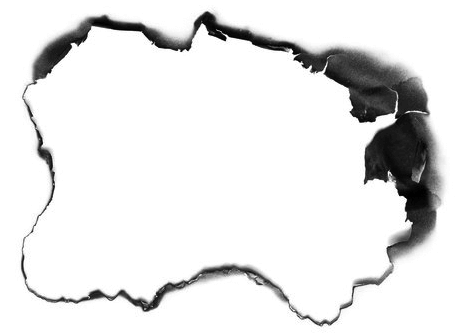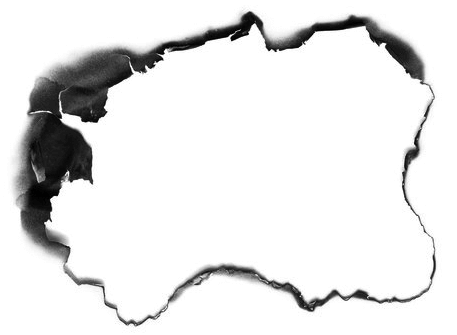Montreal, 27 January 2014
Bobby,
You are ugly, awkward, clumsy, hairy and all-in-all rather disgusting. There are all kinds of ways of inhabiting the Earth.
Since you are so repulsive, the more you are free in relation to others, the better things will go for you. You’ll be the creator of your life. You’ll be free, and you’ll never take anything for granted.
The world is not stable. That which you see is well and truly there, but only temporarily. There’s a world to create. People will try to make you believe the opposite, that there’s a world to enter. You must destroy all the images, all decorum, and all dirty doublespeak.
Language is doubtful, I tell you, but it’s also incredible. Philosopher Ludwig Wittgenstein spoke about it at length. His books, by the way, are hardly written; they consist only of paragraphs, numbers, and were in fact usually written by others. He destroyed this absurd notion of “stability” of language and words, and I share his opinion insofar as it relates to objects and things – “stuff,” as we say, this hairy, soft, and volatile thing we cannot for the life of us grab hold of.

I’ve had recourse to phonemes in order to speak, using only the consonants at the beginning of words. This has allowed me to avoid hollow language and useless conversations but hasn’t helped my case or my life in society. Try it with a book – erase as many letters as you can, and you’ll see, it works, we can still understand: “whatever a man knows, whatever is not mere rumbling and roaring that he has heard, can be said in three words” (Kürnberger, as cited by Wittgenstein, 2002, 29).
You are a free being, I say to you again, and this means you will create space and time. And since everything is ephemeral, neither of these will last. People will make you believe that they will, and will want to sell you insurance, a house, a car: don’t fall for it.
There is only little, very little, that we truly need.
You will need your strength in order to destroy space, first of all. You’ll have to do it fast because space settles in and quickly freezes time. And this could be your death warrant. Your eyes will become opaque, dull, and you won’t even be a machine – at most, you’ll be a parrot who repeats and rehashes what others see. You’ll develop an insatiable appetite for images simply to be able to feel. You will live in the gaze of others and you will die with it. Free yourself, liberate your perception of all approval. That freedom is all you have. Make sure of this, for yourself and for others. Perception must remain something outside of language, words and things. Otherwise, you’ll be living the parody of a reality – which we call “culture.” What a strange and contradictory word.
Nothing is fixed: everything is in motion, all the time. And since things are moving constantly and meaning is endlessly being revealed, we complete the missing information: phrases, objects, anything – we fill in the blanks or, inversely, we create blanks, we erase, omit, and obliterate. We try to create meaning in this way. Space-time – the world, if I may – recreates itself and essentially comes down to a question of quantity – the quantity of what you remove or of what you add to space. The smallest thing can change everything.
Art will be your language. You will have nothing to do, which should be simple – but it will in fact be very complicated. You’ll be constantly hallucinating your reality. And like visual artist Alberto Giacometti, you will always be in the process of redoing and crossing out that which you do. Reality shifts quickly. Same thing when you speak. Toad sounds will come out of your mouth and the mouths of others; you’ll need to be empathetic and understand that language is a small scale of communication that doesn’t describe very much. This brings to mind an anecdote related by architect Cedric Price: a couple had invited him to dinner to ask him to build their dream house, but on his way back, in the taxi, Price realized that what the couple actually needed was to get a divorce…
I wrote this quotation of his down in a notebook but now I’ve lost the source: “An architect should not build dreams. She should build realizable reality and through its very presence enable the users to dream.”
I believe that Wittgenstein described the hallucination within communication. Language is a convention we agree on, provisionally; time and use transform it. Words constitute points of reference and establish a signage system that allows us to communicate. For Wittgenstein, language is dynamic. So is space – it’s in movement, but your eye resists this and tries to solidify it. This is a difficult notion to explain, because you don’t ever see the room around you moving; this is simply because space begins in you – you are never excluded from that which you perceive – and is always reconfiguring itself. A little like when you come back to your apartment after several weeks’ absence, and it seems much smaller and older than before. It’s the same thing with words – they are symbols, lines, points, objects, and they are instable and insatiable.
But let’s return to the subject of art.
We don’t see anything anymore. I can’t wait for the day when you toss what you have at hand into the chain of events. A simple pebble will do the trick. Space needs to be recreated constantly. You won’t have to do much, believe me. I urge you to go forward frankly, tear up everything, don’t hold back. Go on! Space dies very quickly.
Space is our perception, materialized – or not. I’ve spoken to you about objects and your body and how it composes space, but lines of force cross it, intentions produce it, experiences are born from it, space can be nothing other than dynamic. Think of the character examining chairs in the waiting room in Playtime by Jacques Tati (1967), where couch cushions deflate, eruct and possess their own lives; or of the demolition scene in the restaurant, when the ceiling collapses and they chaos of everyone’s bungling allows, in a way, for the space to open and overflow. Space and objects act upon each other and thus recreate themselves, producing new, distinct objects that are desynchronized in relation to one another, noisy and quiet at once.
There are so many ways of having time penetrate a space, but time can only be anachronistic to the space. The effects of this are multiple and most formidable. Director Robert Bresson always uses sounds that are extradiegetic to the filmed image. The spatial and temporal synchronization between the image and the sound is rarely complete. Each of these languages belongs to a distinct space-time, assembled during the editing process.
Time penetrates space through movement and in various modalities, but the one that interests me most is destruction. I encourage you to generate errors, accidents, and erasure – or even to multiply the quantity of an element in order to attain destruction. What you use to accomplish this is up to you, everything depends on your aim and your argument. Or neither of these because you will often act without intention. You won’t need to if you are awake to the world around you. There are all kinds of destructions – it doesn’t have to be violent, it’s a question of intensity.
Tati threw a pebble by dislocating sound from image. In doing so, he produced an artificial space for the viewer, and the image became visible once more. The order of things was subtly, furtively disturbed. And it made us laugh. Can we make people laugh any other way than through the details? Here it is again – the idea of the smallest increment that changes everything.
You could change things by making people laugh, but it will be difficult, because it will mean acting upon a very small thing… I realize that what I’m telling you comes down, in the end, to a miniscule detail. I’m speaking about disjunction. The destruction of a space requires very little. For example, holes. Have I already spoken to you about holes?
A space full of holes…
Take a movement, for example: a jump. If we keep nothing but the beginning (the momentum) and the end (the landing), and extract what is in the middle of the jump, what happens? The movement produced is rather odd, and even more so if we execute it quickly. This generates a dynamic rather than a movement or a form in space. We might speak of a form in time, or temporal formalism, or of a formless formalism. I call this a fake space, which is to say an incongruous space where only one quality is found: precision.
And with this, we are right on the nose: by destroying part of the information, we generate a space-time that is vibrantly alive and in a state of perpetual change. This is the space of the artists I’ve spoken to you about, the one we are all looking for, without even realizing it.
I think Cedric Price occupied this space-time by seeing beyond his culture as an architect. He listened to the story of that couple – let’s call them Margaret and Adam. He paid attention to the situation beyond language; he was sensitive to language in a wider sense, and to what happened during their conversations, to the couple’s needs, as manifested beyond spoken words. Price could have constructed more buildings, but he always refused to build if the project proved not to be necessary, not out of a minimalist spirit, but simply because architecture should respond to the needs of individuals in society.
Thinking in terms of systems and social relationships offered architects, who at this time frequently faced demands to inform their work with a sense of social responsibility, the possibility of realizing a new, holistic perspective with regard to the space in which people lived. When explaining his approach to the project, Price, too, argued that conceiving of the construction site in holistic terms was fundamental to the improvement of the quality of work (Herdt 2012, online).
Bobby, you must destroy, I encourage you to be direct in your approach, don’t hold back, space dies very quickly, I want you to understand.
Cedric understood it. A building has a life span of ten years at most. After that, it must be demolished. If human beings have a life expectancy of 80 years, why should the building be built over the course of 300 years? Architecture, for Price, could become tyrannical if it became too functional. He’s probably one of the only architects, you know, who held a demolition permit in London in the 1980s.
Lynda
